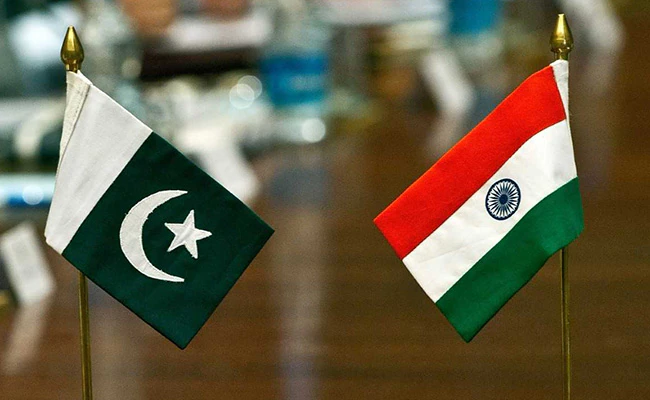
In a significant development, the governments of India and Pakistan have agreed to a ceasefire following days of intense cross-border conflict. The India Pakistan Ceasefire 2025 has been welcomed with cautious optimism by the international community, especially after weeks of rising hostilities triggered by a deadly militant attack in Indian-administered Kashmir.
Though the guns have fallen silent for now, the larger question remains—can this ceasefire lead to a sustained peace, or is it merely a pause before another storm?
🔥 Background: Escalation Before the Ceasefire
The backdrop to the India Pakistan Ceasefire 2025 is rooted in an April 22 attack in the tourist district of Pahalgam, which killed 26 civilians. Indian authorities quickly blamed Pakistan-based terrorist groups, reigniting old wounds between the two nuclear-armed neighbors.
In response, India launched “Operation Sindoor,” a large-scale military operation targeting alleged terrorist camps in Pakistan-administered territory. Pakistan retaliated swiftly with aerial and artillery strikes, leading to heavy casualties on both sides. For four days, the Line of Control turned into a flashpoint with the potential to spark a larger regional crisis.
It was only after intense diplomatic efforts and backchannel military communication that the ceasefire was announced on May 10, halting the bloodshed—at least temporarily.
🕊️ Terms and Mediation
While official statements from both New Delhi and Islamabad emphasize that the ceasefire resulted from “mutual understanding and military coordination,” sources close to the negotiation table suggest U.S. mediation played a crucial role. Washington’s pressure and promises of trade and aid reportedly influenced both countries to pull back from the brink.
The India Pakistan Ceasefire 2025 outlines a mutual halt to offensive military operations, restoration of peace at border posts, and reactivation of hotlines between military commanders to de-escalate future incidents.
However, no roadmap has been publicly announced for long-term peace, Kashmir negotiations, or the dismantling of terror networks that remain the root of mistrust between the two nations.
⚠️ The Fragility of Truce
Experts have labeled the ceasefire “fragile but necessary.” Given the recent violations of previous ceasefire agreements, many analysts are skeptical about the sustainability of this truce.
In fact, within 48 hours of the announcement, both India and Pakistan accused each other of minor violations—though none were as escalatory as prior skirmishes.
“The history of India-Pakistan relations is littered with broken promises and shattered ceasefires,” says retired Indian Army General R.K. Sharma. “Unless there’s a structural change in the political and military approach from both sides, this could just be another temporary pause.”
🌍 Regional and Global Impact
The India Pakistan Ceasefire 2025 has had a ripple effect across South Asia. Countries like China, Afghanistan, and Iran are closely watching the developments, given their geopolitical stakes in the region. Meanwhile, global powers including the United States, Russia, and the European Union have expressed relief but warned of the underlying tensions that remain unaddressed.
Tech sectors in both India and Pakistan, which were seeing investor hesitancy during the conflict escalation, are already beginning to stabilize. Peace, even a temporary one, brings back some investor confidence—especially in the startup and telecom sectors that operate cross-border or in proximity to the conflict zone.
💬 Public Response
Public sentiment remains divided. In India, nationalist media outlets have called the ceasefire a diplomatic win, showcasing military strength followed by peace enforcement. In Pakistan, the government is portraying the truce as a success of principled negotiation.
However, citizens living near the Line of Control are less interested in political narratives. For them, the ceasefire means safety, uninterrupted schooling for children, and the possibility of rebuilding their lives.
“Peace on paper is not peace on the ground until the guns stop firing for good,” says a resident of Baramulla, a town close to the conflict zone.
🚧 Road Ahead
While the India Pakistan Ceasefire 2025 offers a welcome break from violence, real peace will demand more than just military restraint. Key concerns that need to be addressed include:
Tackling cross-border terrorism with transparency.
Initiating diplomatic dialogue on Kashmir, the core conflict issue.
Engaging in regional trade and people-to-people contact.
Strengthening backchannel communication to prevent miscalculations.
Until these pillars are built into the peace framework, the current ceasefire risks going the way of its predecessors—short-lived and ultimately ineffective.
📢 Final Thoughts
The India Pakistan Ceasefire 2025 is a step in the right direction, but it is not a solution. It is a window of opportunity, and what both nations choose to do with it will determine whether South Asia can break the cycle of hostility.
Without structural reforms, mutual trust-building, and courageous political leadership on both sides, the specter of another conflict will continue to loom large.